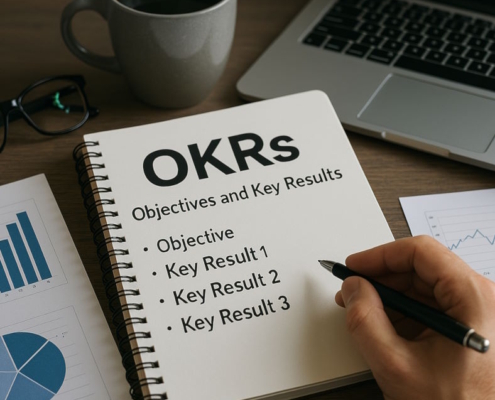What are the components of a marketing plan?
The components of marketing plan is a strategic outline businesses use to organize, execute, outreach to specific customers, and track their advertising strategy based on a schedule that includes weekly, monthly and yearly activities.
By Brad Nakase, Attorney
Email | Call (888) 600-8654
With a marketing plan, a business may be able to establish the budget to fund projects, outsourcing, and hiring. Let’s look at the elements of a solid marketing plan, which are necessary regardless of whether a business sells to customers or other companies. In this article, our California business attorney discusses the elements of a business plan and its components as follows:
Business summary
A business summary component, one of the elements of a marketing plan, is a summary of the company. It is important to include this summary so that stakeholders understand the company in detail before getting into the more strategic parts of the plan. Even if the business owner is showing this plan to veteran members of the company, it does not hurt to ensure that everyone is on the same page.
The majority of business summaries include the following elements:
- The name of the company
- The location of the company
- The company’s mission statement
A marketing plan’s business summary may also include the leadership’s information, which can be helpful for companies that have large marketing teams.
SWOT Analysis
SWOT stands for a company’s strengths, weaknesses, opportunities, and threats. This business plan element is important to provide a SWOT component in a marketing plan so that the company can use its strengths to its advantage and improve on any weaknesses.
That said, a business owner should be patient when it comes to this analysis. Most of it will be written as market research is conducted. It may be useful to revisit this section now and again as one learns more about the company and its competition.
Business initiatives
The business initiative component of a marketing plan helps a business owner divide the various marketing goals. It is important not to focus on grand-scale company goals that are better-suited to a business plan. Rather, this business plan element should focus on marketing-specific projects. Here one will describe these projects’ goals and detail how success will be measured.
Every goal should make use of the SMART method. This means they must be: specific, measurable, attainable, relevant, and time-bound.
Customer analysis
The customer analysis component of a marketing plan allows a business owner room to provide data collected through market research. If a company has already performed a detailed market research study, then this element of a business plan should be fairly simple to put together. In the end, this part of the marketing plan helps describe the target industry and the ideal customer. A buyer persona is a made-up description of the target customer; it focuses on characteristics such as:
- Location
- Age
- Title
- Personal challenges
- Goals
- Triggering event
- Pains
Competitor analysis
It is essential to include a competitive analysis component in a marketing plan. A prospective buyer has options when it comes to solving a problem, regarding both the kinds of solutions and the providers of those solutions. When conducting market research, a business owner should think about their competition, including their strengths and any weaknesses that can be exploited. This element of a marketing plan may include:
- Market share
- Positioning
- Pricing
- Offerings
It may be wise to list the specific services or products that one competes with, as well as the other aspects of the competition’s strategy. Perhaps they run an engaging blog or are known for excellent customer service. This element of a marketing plan should be kept simple – a full competitive analysis should be completed separately.
Market strategy
A market strategy component of a business plan makes use of the information listed above to detail how a company should interact with the market. The main question is what the business can offer a customer that a competitor cannot?
As a business owner completes this element of a business plan, he or she should use the thoughts generated by the SWOT analysis, the competitive analysis, and any market research to establish effective, targeted descriptions that can help with securing buy-in for strategies and tactics down the road. For example, if a business owner learns that one of their major competitors has better marketing strategies for social media, it might be useful to add “Let’s post five times a week on our Facebook and Instagram pages” under “Promotion.”
A marketing strategy section should contain the following subsections:
- Price
- Product
- Promotion
- Place
- Process
- People
- Physical evidence
Budget
A budget component to a business plan refers to how much money the company gives the marketing team to pursue the goals and initiatives outlined in the above elements.
A business owner should think about itemizing their budget according to what specifically they intend to spend money on. This will partially depend on how many individual costs a company has. Some examples of marketing expenses include:
- Marketing software
- Outsourcing costs to a marketing agency and/or providers
- Events
- Paid promotions
For this element of a business plan, being conscious of a budget and conducting analysis on potential marketing channels will allow a business owner to create a plan for how much to invest in which strategies based on predicted ROI. From this point, it will be possible to form financial projections for the year. While these will not be completely accurate, they can still assist with executive planning.
It should be remembered that a marketing plan only provides a summary of expenses. It is suggested to keep a separate Excel document that can more effectively calculate a budget.
Marketing channels
A marketing plan should have a component addressing marketing channels. Using these channels, a business will publish information that educates buyers, spreads awareness of the brand, and generates leads.
If a business intends to put information on social media, this is the place to discuss it. This element of a business plan should be used to list the different social platforms to be used, what the social network will be used for, and how success will be measured. The point is to prove to executives that these channels can grow the company.
Marketing technology
Also part of the marketing plan should be a review of what tools the company will use to achieve its goals. For each type of marketing software, there should be a description of what it will be used for.
Have a quick question? We answered nearly 2000 FAQs.
See all blogs: Business | Corporate | Employment Law
Most recent blogs:
Contact our attorney.































